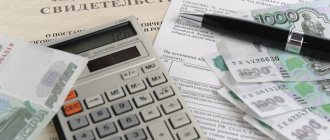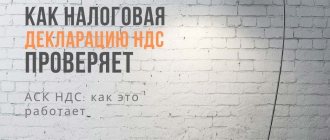02.02.2021
If you are familiar with the rates and restrictions of the simplified tax system in 2021 and you just want to find out about filing a notification (application), go straight to this section. For some, this issue is very urgent: former UTII payers need to resolve it before March 31, 2021, and new entrepreneurs and organizations - within a month from the date of registration.
If you first want to refresh your memory about the essence of the simplified tax regime, then continue reading in order.
Simplified taxation system
Among the permitted regimes, the simplified taxation system (STS) is the most common for accounting, primarily for individual entrepreneurs (IP).
The simplified tax system is in demand due to the simplicity of accounting, the ability to select an object of taxation and the combination of accounting with UTII and PSN. The disadvantages of the simplified tax system include the presence of restrictions on permissible types of activities, physical indicators of numbers and fixed assets, and revenue. A controversial indicator is the absence of the need to impose VAT, which reduces the tax burden, but reduces the ability to work with VAT paying companies.
Selecting an object of taxation
It is necessary to clearly define the object of taxation before switching to a simplified taxation system. This is the part of your income on which you will have to pay tax.
There are 2 objects of taxation:
- “Revenue”, that is, the tax will be 6% of the total volume of financial receipts, regardless of expenses - a 15% tax is calculated on the profit that remains after deducting all the company’s expenses.
The choice of object directly depends on the economic activity of the enterprise itself. For example, during the year the Astra studio earns 1.5 million rubles. The cost of the studio's needs is 800 thousand rubles. The same studio "Alliance" has the same 1.5 million per year. But at the same time, he spends significantly less on his own needs, only 300 thousand.
Simplified taxation system of the Tax Code of the Russian Federation
The use of the simplified tax system is permitted for enterprises of all forms of ownership, with the exception of companies operating in the following areas:
- banking sector;
- insurance;
- investment and pension non-state funds;
- pawnshops;
- production of excisable goods (there is no restriction for sale);
- extraction and sale of subsoil mineral resources (excluding common ones);
- lawyer and notary practice;
- other types established by Art. 346.12 of the Internal Revenue Code.
In addition to restrictions on types of activities for the use of the simplified tax system, there are maximum revenue indicators, exceeding which for 9 months does not allow switching to a special form of taxation and deprives the right to use the simplified tax system if the annual figure is exceeded. The amount of the maximum income for 9 months for the transition to the simplified tax system and annual revenue is indexed annually.
In Art. 346.12 of the Tax Code of the Russian Federation legislated restrictions regarding the performance indicators of an enterprise when maintaining the simplified tax system:
- The average number of employees, calculated using the statistical method. The maximum number of persons in an organization or individual entrepreneur should not exceed 100 people for each reporting and tax period. When combining the simplified tax system with other taxation systems, the headcount is calculated for the company as a whole.
- The value of fixed assets on record. The maximum residual value of assets should not exceed 100 million rubles. The limit is determined by the funds subject to depreciation. When calculating the maximum value, the cost of fixed assets is taken into account for the enterprise as a whole.
The taxpayer has the opportunity to choose a tax regime. The choice is made based on considerations that are most favorable for the business. The forms differ in the volume of document flow, the need to account for expenses and the size of the rate. Used as an object
- Income received from activities.
Expenses do not participate in determining the tax base. The simplified taxation system for an LLC or individual entrepreneur with the object “income” has no obligation to account for costs. The form is used by enterprises that do not have significant expenses and staff of accountants for accounting. Most often, the simplified tax system with the object “income” is used in the service sector. The single tax rate for the “income” object is set at 6% of the revenue received. By decision of regional authorities, the rate can be reduced to 1% of income.
- Income reduced by expenses incurred.
The most commonly used option. Costs must be economically justified and documented. To determine the base, expenses corresponding to the closed list established in Chapter are taken into account. 26.2 Tax Code of the Russian Federation. The established rate of 15% of the difference between income and expenses can be reduced in the regions to 5%. Rate reductions are primarily made for certain types of activities when it is necessary to stimulate them. The tax rate is differentiated annually.
The simplified taxation system is characterized by the cash method of accounting for income and expenses. When maintaining the cash method, the following provisions are taken into account:
- Income is recorded in accounting as payment is received for goods sold, work performed and services rendered. Advance payments are also included in revenue for tax purposes.
- Expenses are accepted for write-off after they have actually been incurred and payment has been made to the supplier of goods, works, and services. For example, during commodity exchange transactions, in order to accept the cost of goods as expenses, an enterprise must purchase inventory materials, make payments to the supplier and transfer ownership to the buyer.
A number of expenses determined in accordance with Chapter 25 are recognized using the accrual method. The simplified taxation system of the Tax Code of the Russian Federation uses the provisions of the chapter on income tax in cases where Chapter 26 is directly indicated. For example, when writing off depreciation charges as expenses, the amounts of the monthly write-off rate are taken into account. The cash method of the simplified tax system is expressed in the condition of payment to the OS supplier of the purchase amount, after which depreciation can be taken into account as expenses. In this case, the amount accrued before payment is fully taken into account in expenses after payment is made.
Tax base of the transition period
Before starting to apply the simplified taxation system, a company must create a tax base for the transition period. The procedure for determining it depends on how the organization calculated income tax:
- accrual method;
- cash method.
Special rules for the formation of the tax base of the transition period are established only for organizations that determined their income and expenses by accrual. This follows from the provisions of paragraph 1 of Art. 346.25 of the Tax Code of the Russian Federation.
1. Income
In such “transitional” income, companies must include unclosed advances received during the period of application of the general taxation system. This is explained by the fact that under the accrual method, income must be reflected on the date of sale of goods (work, services). The date of payment does not affect the amount of income (clause 3 of Article 271 of the Tax Code of the Russian Federation). When simplified, the cash method is used. With it, income is generated as payment is received, regardless of the date of sale of goods (work, services) on account of which it was received. Such rules are provided for in paragraph 1 of Art. 346.17 of the Tax Code of the Russian Federation.
Advances received for upcoming deliveries during the period of application of the SST are included in the single tax base as of January 1 of the year in which the organization begins to apply the simplified regime (subclause 1, clause 1, article 346.25 of the Tax Code of the Russian Federation). At the same time, take into account the specifics of calculating and paying VAT received as part of advances.
In the future, advances received before the transition to the simplified tax system must be taken into account when determining the maximum amount of revenue that limits the use of the special regime. This follows from the provisions of clause 4.1 of Article 346.13 and clause 1 of clause 1 of Article 346.25 of the Tax Code of the Russian Federation.
In 2021, the maximum amount of revenue that allows you to apply the “simplified tax” is 150,000,000 rubles. (clause 4 of article 346.13 of the Tax Code of the Russian Federation).
Buyers' receivables accumulated during the application of the OSN do not increase the tax base of the transition period. With the accrual method, revenue is included in income as it is shipped (Clause 1, Article 271 of the Tax Code of the Russian Federation). This means that it has already been taken into account for tax purposes. Amounts received to pay off the organization’s receivables after the transition to the simplified tax system do not need to be re-included in the tax base. This is indicated by paragraph 3 of paragraph 1 of Art. 346.25 of the Tax Code of the Russian Federation.
2. Expenses
Those organizations that used the accrual method should include here unrecognized expenses that were paid during the period when the general tax system was applied. This is explained by the fact that with the accrual method, expenses are taken into account on the date of their implementation (clause 1 of Article 272 of the Tax Code of the Russian Federation). The date of payment does not affect the date of recognition of expenses. When “simplified”, the cash method applies (clause 2 of Article 346.17 of the Tax Code of the Russian Federation). With it, expenses are formed as they are paid. Moreover, additional conditions have been established for the recognition of certain types of costs.
Advances issued during the period of application of the general taxation system against future deliveries (excluding VAT) should be included in the single tax base on the date of receipt of goods (work, services). At the same time, take into account the restrictions associated with the write-off of purchased goods and fixed assets. Include paid but unrecognized expenses as expenses as the conditions under which they reduce the tax base for the single tax are met. These rules are provided for in subparagraph 4 of paragraph 1 of Article 346.25 of the Tax Code of the Russian Federation.
The organization's accounts payable for expenses that were taken into account when calculating income tax do not reduce the tax base for the single tax. Amounts paid to repay accounts payable after the transition to the simplified tax system cannot be re-included in expenses. For example, if unpaid goods were sold before the transition to the simplified regime, then there is no need to take their cost into account when calculating the single tax after payment. This is indicated by subparagraph 5 of paragraph 1 of Article 346.25 of the Tax Code of the Russian Federation.
3. Cash method
For organizations that have already used the cash method, a special procedure for generating income and expenses when switching to a simplified system has not been developed. This is due to the fact that such organizations previously recognized their income and expenses as they were paid (clauses 2, 3 of Article 273 of the Tax Code of the Russian Federation). For them, when switching to the simplified tax system, nothing will change.
Here you should pay attention to the procedure for determining the residual value of depreciable property acquired before the transition to the special regime.
If the organization paid for such property and put it into operation before the transition to the simplified tax system, then determine its residual value in the following way. From the purchase price (construction, manufacturing, creation), subtract the amount of depreciation accrued during the period of application of the general taxation system. In this case, use tax accounting data (clause 2.1 of Article 346.25 of the Tax Code of the Russian Federation).
If, before the transition to the “simplified” system, fixed assets or intangible assets were created (purchased, constructed, manufactured), but not paid for, then reflect their residual value in accounting later, starting from the reporting period in which the payment occurred. The residual value must be determined as the difference between the purchase price (construction, manufacturing, creation) and the amount of depreciation accrued during the period of application of the general taxation system.
However, for organizations that calculated income tax using the cash method, the residual value of such property will coincide with the original one. This is due to the fact that under the cash method, only fully paid-for property is depreciated (clause 2, clause 3, article 273 of the Tax Code of the Russian Federation).
Application for simplified tax system
The right to use the simplified tax system is granted upon registration of an organization or individual entrepreneur. An organization or individual entrepreneur submits an application to the simplified tax system simultaneously with the constituent documents and within 30 days from the date of registration of the enterprise with the Federal Tax Service indicated in the certificate.
If the application deadline for the simplified tax system is not met, the enterprise will not be able to apply the special taxation system and will automatically switch to the OSNO. The generally established form is assigned to all enterprises after registration in the absence of an application for transition to conduct a special type of taxation.
Features of registration notification:
- the application is submitted on Form No. 26.2-1.
- the document contains the taxable object chosen by the taxpayer.
- For newly registered organizations or individual entrepreneurs, a footnote is provided for the beginning of the application of the simplified tax system from the date of registration.
- compliance of the restrictive parameters of the number and revenue with the required conditions is not subject to verification due to the lack of activity before submitting the notification.
The application is drawn up in manual or typewritten form on a standard form. Empty cells on the form are crossed out. Submission of the notification is made in person or through a representative in the presence of a power of attorney executed in the prescribed manner. Powers of attorney from organizations (for example, LLC) are accepted on the company's letterhead with the signature and seal of the legal entity. Representatives of individual entrepreneurs must present a power of attorney certified by a notary.
The right to use the simplified tax system for an organization or individual entrepreneur arises upon receipt of a notification from the Federal Tax Service; the tax inspectorate does not issue a certificate. An enterprise can receive confirmation of the right to maintain the simplified tax system, for example, to submit data to judicial authorities or partners, upon written request:
- appeal to the tax authorities is made in any form.
- confirmation of the maintenance of the simplified tax system by an organization or individual entrepreneur is made by the Federal Tax Service according to form No. 26.2-7.
- a response to the submitted request will be received by the taxpayer within 30 calendar days.
- a notification letter of form No. 26.2-7 is sent to the organization at its location, individual entrepreneur - to the registration address.
When carrying out a reorganization through the merger of enterprises, an application for the use of the simplified tax system must be submitted to the Federal Tax Service again, regardless of whether the organizations used the simplified taxation system previously. The requirement to submit a notice of application of the simplified tax system is based on the termination of the existence of the reorganized organization. Submission of a notification to a newly created enterprise is carried out within 30 calendar days from the date of entering information into the register.
Tax response
You should not wait for a response from the tax office after submitting a notification about the transition to the simplified tax system. The transition to the simplified tax system is of a notification nature, and for this reason the tax office will not issue you any special permission. She will simply take note of your transition.
This fact indicates that the entire responsibility for compliance with all criteria required by law for the transition to the simplified tax system lies with you.
If you are concerned about whether your notice was lost and whether everything is in order, then you can ask the tax office for confirmation that you have applied the simplified tax system. There is a special approved form for the request, but it can also be written in a free style.
You must receive a response within 30 days. It is usually sent by mail. But this answer only indicates that you are using the simplified tax system. It is not a confirmation from the tax authorities of the fact that you have rights to the simplified tax system and meet all the requirements.
Transition to simplified tax system
The transition from the taxation system used by the enterprise to the simplified taxation system is formalized by a notification from the Federal Tax Service. A person submits an application to change the taxation regime according to the simplified tax system, form No. 26.2-1, which is also used by newly registered enterprises or individual entrepreneurs. The document must be submitted no later than December 31 of the year preceding the transition (Article 346.13 of the Tax Code of the Russian Federation).
Procedure for filling out the notification:
- the document contains a taxpayer attribute code that allows you to isolate the transition to the simplified tax system from UTII (code “2”) or another type of taxation (code “3”).
- The form contains data on the income received by the organization or individual entrepreneur and the residual value of fixed assets. Data is indicated as of October 1 of the current year.
- the taxpayer indicates the start date of maintaining the simplified tax system. The application of the simplified taxation system begins from the beginning of the calendar year, except for persons applying UTII.
- the form contains information about the selected object of taxation under the simplified tax system.
For persons who use only UTII in accounting and have ceased to use the type of taxation, the transition to the simplified tax system is made from the beginning of the month of the current year in which activities on imputed income were stopped. A special feature of the transition from UTII is that there is no need to indicate the income received. Taxpayers using UTII do not keep track of revenue for imputed income. If, simultaneously with UTII, an organization or individual entrepreneur used OSNO, the revenue received by the enterprise is indicated in the notification.
When an entrepreneur or LLC loses the right to a special regime
If the operating conditions no longer meet the requirements for working on the simplified tax system, the LLC or entrepreneur must switch to OSNO. This occurs when the following limits are exceeded:
- annual income from activities exceeded 150 million rubles;
- the number of hired workers increased and became more than 100 people;
- the residual value of fixed assets has crossed the mark of 150 million rubles;
- the organization has branches and (or) the share of other legal entities in the authorized capital exceeds 25%;
- the taxpayer has engaged in one of the types of activities for which the application of the simplified taxation system is not permitted.
In all of the above cases, individual entrepreneurs and organizations lose the right to work under the simplified system and are considered to be using OSNO from the beginning of the quarter in which the violation or excess occurred, even if this was not immediately detected.
From the beginning of the quarter, it is necessary to recalculate taxes as under OSNO, pay them, submit missing reports for VAT, income tax or personal income tax and property tax. At the same time, there will be no penalties or interest for late payments or late submission of OSNO reports.
The emergence of a separate division in an organization without the characteristics of a branch does not entail the loss of the right to a simplified regime and transfer to the main taxation system. The ban applies only to branches. If a separate division does not have its own balance sheet and is not listed in the Unified State Register of Legal Entities, the organization can continue to apply the special regime legally.
Is it possible to switch to the simplified tax system again if the taxpayer once lost this right?
Yes, such an opportunity is provided, but not earlier than in a year (clause 7 of Article 346.13 of the Tax Code of the Russian Federation), provided that it meets all the requirements for applying the simplified tax system. Get a savings estimate
Application for changing the taxation regime according to the simplified tax system
When conducting business, there is a need to change the type of taxation and apply “income” or “income minus expenses” as the optimal form. The right to change the form and switch to a simplified taxation system with another object is granted annually from the beginning of the calendar year (Article 346.14 of the Tax Code of the Russian Federation). The right to transfer from the beginning of the calendar year is explained by the tax period of the single tax paid when maintaining the simplified tax system.
A notification of a change in the object of taxation from the beginning of a new calendar period is submitted to the Federal Tax Service by December 31 of the current year. There is no transfer to another facility during the annual period. Application form to the Federal Tax Service – form No. 26.2-6.
The document states:
- name of the organization or last name, first name, patronymic details of the individual entrepreneur;
- selected object of taxation;
- the period from the beginning of which the change is made.
The form must be submitted in person on paper, by post or electronically by means of communication and if the taxpayer has a personal account.
Consent to change the object of taxation from the Federal Tax Service is not required. The receipt of a notification by the tax inspectorate and the start of use of another object of the organization or individual entrepreneur is not reported. When sending by mail, the date of sending the registered letter is taken into account. To confirm the sending of the document, you will need to fill out an inventory of the attachment (available in letters with declared value) and a receipt. A properly executed postal item guarantees the rights of the taxpayer.
The transition from the simplified tax system to another type of taxation is carried out after the end of the calendar year (tax period). Notification must be made by January 15 of the year following the end of the calendar year. The notification form is presented on form No. 26.2-3. The document contains information about the enterprise, the period of termination of the simplified tax system, contact phone number and information of the applicant.
During the year, the application of the simplified tax system is not waived, except in cases where the organization or individual entrepreneur has exceeded the limit values. The company carries out an automatic transition to OSNO.
If the indicators are exceeded, the enterprise:
- must notify the Federal Tax Service of violations of the conditions for applying the simplified tax system.
- reform the accounting of indicators in the manner prescribed for OSNO.
- submit reports to the Federal Tax Service according to taxes paid when maintaining OSNO.
- pay accrued taxes and penalties received for late payment.
A taxpayer making an automatic transition to OSNO has the right to offset advance payments made when paying a single tax. A repeated transition to a simplified taxation system is made after the expiration of the next calendar year. To notify the Federal Tax Service, a special form No. 26.2-2 is used. The taxpayer is obliged to submit a single tax return early within a period not exceeding the 25th day of the month following the end of the quarter in which the right to use the simplified tax system was lost.
If a taxpayer ceases maintaining the simplified tax system in connection with the liquidation of an organization or individual entrepreneur, the tax authority will need to be notified about this no later than 15 days from the date of termination of activities for the type of taxation. When determining the end date, weekends or holidays are taken into account. The deadline for submitting a notice of termination of activity under the simplified tax system is the first working day.
Simplified taxation system for LLCs
An enterprise registered in the form of an LLC has the opportunity to apply a simplified form of taxation when fulfilling the restrictive conditions relating to the general provisions and the LLC. Foreign organizations and microfinance organizations, budget institutions of all levels do not have the right to use the simplified tax system in accounting. A simplified taxation system is used for LLCs by organizations that do not have branches or representative offices. When using the simplified tax system by an organization in the form of an LLC, its share of participation in the authorized capital of legal entities should be no more than ¼ of the total cost.
A simplified taxation system for LLCs is used, mainly for small businesses. The use of the simplified tax system allows you to replace the payment of VAT, income and property taxes to an LLC.
There are exceptions in which the taxpayer deducts VAT using the simplified tax system. VAT must be paid if:
- LLC purchases goods from non-resident sellers with their subsequent sale in Russia.
- The LLC issues an invoice to another LLC or individual entrepreneur with allocated VAT at the request of the buyer. VAT paid to the budget is not included in income subject to a single tax under the simplified tax system and in expenses taken into account when calculating the tax base of the simplified tax system.
- The LLC conducts the affairs of the organization on the basis of a division under a simple partnership agreement.
- acts as a tax agent - carries out transactions for the purchase or registration of lease of municipal or federal state property.
- carry out transactions under agency agreements and trust management of property. In case of transactions for the sale of goods or their acquisition on one’s own behalf, the invoice is issued without payment.
The simplified taxation system for LLCs allows such operations to be carried out, subject to compliance with the document flow. Unlike enterprises with other types of taxation, LLCs using the simplified tax system must keep logs of invoices in the event of issuing documents.
When conducting LLC operations using the simplified tax system, it is necessary to issue an invoice with VAT allocated, register it in the journal, submit a VAT return and pay the VAT amount to the budget. There is no VAT deduction. Simplified residents who pay VAT are deprived of the right to reduce the VAT tax base by deducting input VAT amounts. A peculiarity of VAT taxation for persons using the simplified tax system is that there is no need to submit electronic forms of accounting books.
The Federal Tax Service does not accept deductions for invoices issued by simplified companies in the form of an LLC or individual entrepreneur. According to the tax inspectorate, the simplified taxation system for LLCs is not a VAT payer, which does not allow the buyer to take advantage of the deduction. The issue is being contested in court and has positive precedents.
A distinctive feature of the simplified tax system for individual entrepreneurs from the simplified tax system for individual entrepreneurs is the need to maintain accounting records. In connection with the maintenance of transactions in the ledger of income and expenses (KUDiR) under the simplified tax system, the organization has the right to simplified accounting. For small or micro-enterprises that apply the simplified taxation system for LLCs, annual financial statements are submitted in a minimum number of balance sheet forms. In accounting for the simplified tax system for individual entrepreneurs, there is no need to maintain accounting records.
Features of the design of the KUDiR accounting book:
- The journal is kept in chronological order.
- The simplified tax system accounting book, generated in electronic form, is printed, numbered and stitched at the end of the reporting or tax periods.
- from the beginning of the tax period of the simplified tax system, a new accounting book is opened.
- KUDiR submission to the Federal Tax Service is not carried out simultaneously with reporting.
- The book totals are generated by reporting periods to obtain data on the amount of advance payments.
Maintaining KUDiR in accounting under the simplified tax system in the accounting of LLCs and individual entrepreneurs is of great importance. The book is a tax register for obtaining indicators of the taxable base for the calculation and subsequent payment of the single tax paid when maintaining the simplified tax system.
Restoration of VAT upon transition to the simplified tax system
The LLC will need to restore VAT when switching to the simplified tax system, which means payment to the budget of VAT previously applied as a deduction. When restoring VAT in an LLC, the following features are taken into account:
- VAT previously applied as a deduction is calculated in the period preceding the transition to the simplified tax system. If the transition is carried out from January 1, the calculation with the budget is made in the declaration for the 4th quarter of the previous year.
- the amount of input VAT that was not previously used as a deduction will not be restored when the simplified tax system is applied.
- The calculation of the amount of VAT payable is made in the accounting certificate.
- for fixed assets, the amount of VAT is restored in proportion to the balance.
- VAT restoration is not carried out on assets put into operation before the application of the simplified tax system, which are listed on the balance sheet and are fully depreciated.
When receiving an advance with allocated VAT in the 4th quarter on account of future supplies, the LLC must include VAT in the amount of obligations. An organization can reduce taxation by returning the VAT amount to the buyer before switching to the simplified tax system and deduct VAT based on the payment. The amount of delivery under the contract must be reduced by the amount of VAT.
Simplified taxation system for individual entrepreneurs
The use of a special type of taxation by the simplified tax system for individual entrepreneurs makes it possible to reduce the tax burden and simplify accounting. A simplified taxation system for individual entrepreneurs with the payment of a single tax exempts individual entrepreneurs from paying personal income tax on income received from conducting activities that are mandatory when conducting OSNO. Individual entrepreneurs using the simplified tax system are not VAT payers. The exception is cases stipulated by law in relation to individual entrepreneurs using the simplified tax system who act as tax agents, for example, when renting property that is municipally owned.
With regard to property tax, individual entrepreneurs are exempt from payment on objects involved in generating income, with the exception of property subject to assessment at cadastral value. Starting from 2015, individual entrepreneurs who use the simplified tax system and have objects of regional significance - office buildings, shopping centers - must pay property tax. The composition of the property of individual entrepreneurs on the simplified tax system, subject to taxation, is determined by the regional authorities with publication at the beginning of the year in the official gazette.
Similar to the taxation regime for LLCs, the simplified taxation system for individual entrepreneurs obliges the entrepreneur to comply with the conditions for applying the simplified tax system.
If an individual entrepreneur exceeds the limit of the average number, the amount of fixed asset balance or revenue determined by law for individual entrepreneurs in the tax period of the simplified tax system, the entrepreneur loses the right to apply the simplified tax system. Individual entrepreneur automatically switches to OSNO in compliance with the procedure for conducting transactions provided for the type of taxation.
In connection with the loss of the right to maintain the simplified tax system:
- The individual entrepreneur must notify the Federal Tax Service (submit an application in writing) about the loss of the right to maintain the simplified tax system within 15 days of the month following the quarter in which the indicator limit was exceeded.
- The individual entrepreneur must restore accounting data in accordance with OSNO.
- The individual entrepreneur must submit a declaration according to the simplified tax system with payment of tax.
- An individual entrepreneur must prepare data for making advance payments under personal income tax at a rate of 13% and offset against payments made under the simplified tax system.
Due to the fact that the individual entrepreneur’s OSNO has annual reporting in Form 3-NDFL, the individual entrepreneur is not required to submit other reporting. The calculation of property and transport tax indicators for individual entrepreneurs is carried out by the Federal Tax Service on the basis of equating the individual entrepreneur with an individual. The property of an individual entrepreneur and an individual is not separated in the Civil Code of the Russian Federation, but can be used to conduct business and generate income. Taxes are paid by individual entrepreneurs according to the Federal Tax Service, without filing additional reports.
simplified tax system for individual entrepreneurs
A significant advantage is that the simplified taxation system allows individual entrepreneurs to reduce the single tax on contributions to funds. The simplified tax system for individual entrepreneurs, on a par with LLCs, provides the opportunity to reduce the amount of the single tax on the amount of insurance payments. When using benefits under the simplified tax system, the peculiarity of taxation of individual entrepreneurs is taken into account in the form of paying contributions for their own insurance.
The reduction in the amount of tax depends on the type of taxation of the simplified tax system chosen by the individual entrepreneur with the following objects:
- "Income". If an individual entrepreneur has no employees using the simplified tax system, the amount of fixed contributions is written off in full when calculating the single tax. When reducing the amount of tax, a mandatory condition is taken into account - contributions must be paid by the individual entrepreneur. If the amount is transferred in a lump sum at the end of the year, the single tax can be reduced only in this period. For the effective use of benefits, payments of individual entrepreneur contributions to the simplified tax system are made regularly. If an individual entrepreneur has employees, the tax is reduced by contributions paid from the salaries of employees within the limit of 50% of the amount of the accrued single tax.
- “Income minus expenses incurred.” When calculating the tax base under the simplified tax system, all insurance contributions to funds made for employees and individual entrepreneurs are taken into account. Expenses reflect the amounts paid to the budget, which must be taken into account when making end-of-year payments.
If an individual entrepreneur makes an insurance payment of his own contributions to the budget from the amount of income from the simplified tax system exceeding 300 thousand rubles, the amount of the deduction is not a fixed contribution since it has a variable value. There is no reduction in the amount of the single tax when determining the base according to the simplified tax system for individual entrepreneurs by 1%, paid on excess income.
This might also be useful:
- Deflator coefficients for 2021
- VAT accounting for individual entrepreneurs using the simplified tax system in 2021
- Individual entrepreneur reporting on the simplified tax system without employees
- How to work on the simplified tax system income 6%
- Pros and cons of the simplified tax system and UTII in comparison
- Minimum tax under the simplified tax system in 2021
Is the information useful? Tell your friends and colleagues
Dear readers! The materials on the TBis.ru website are devoted to typical ways to resolve tax and legal issues, but each case is unique.
If you want to find out how to solve your specific issue, please contact the online consultant form. It's fast and free!
Transition from OSNO to simplified taxation system (USN) VAT recovery
When an individual entrepreneur switches from OSNO to the simplified tax system, he will need to pay VAT, which the entrepreneur took into account in the deduction for the balance of goods, materials, and fixed assets not used in activities on the date on which the transition is made. The simplicity of identifying VAT payable by individual entrepreneurs lies in the fact that unused balances are allocated and reflected in the reporting under OSNO.
Before making the transition to the simplified tax system, an individual entrepreneur must reform the data to identify VAT payable to the budget:
- conduct an inventory and determine the amount of inventory balances, including VAT amounts received from suppliers and not used in activities.
- identify VAT on balances previously accepted for deduction when maintaining OSNO. The amount of VAT to be paid to the budget is determined.
- conduct an inventory of fixed assets to identify individual entrepreneurs’ property, fully depreciated and registered, underdepreciated, for which a VAT deduction was taken into account.
- calculate the amount of VAT related to the balance of fixed assets for payment to the budget.
- include the received VAT amounts in the declaration submitted based on the results of the 4th quarter of the year preceding the transition from OSNO.
- pay VAT to the budget. Late payment entails the imposition of penalties on the control authorities.
The most difficult is the transition from OSNO to the simplified tax system and VAT restoration in cases where an individual entrepreneur uses more than one type of taxation. Special conditions for VAT recovery apply when combining regimes before the transition to the simplified tax system. A simplified taxation system for individual entrepreneurs allows you to save UTII when switching from OSNO to simplified tax system.
If, simultaneously with OSNO, UTII was used, taking into account input VAT in the cost of goods, then when switching to the simplified tax system, part of the goods related to UTII is transferred to a new period. There is no need to restore VAT on goods for subsequent sale under UTII.
Similar services on the topic
- Registration of a patent for an invention
- Taxation of individual entrepreneurs
- Conducting business intelligence
- Registration with Rosfinmonitoring
- Registration with the Assay Office
- Trademark registration
- Obtaining a duplicate TIN and OGRN
- Extract from the Unified State Register of Legal Entities/Unified State Register of Individual Entrepreneurs
- Making stamps
- Opening a current account
- Obtaining OKVED codes
- Inclusion in the register of microfinance organizations








